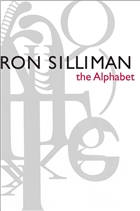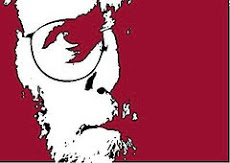A lot of the reading I do when I’m on vacation – which as of this morning is over, alas – is actually rereading. Favorite books, new editions, works that seemed to go by too quickly, books I feel I really need to study. Some of the books that fell into these categories this past month have included Joe Ceravolo’s selected poems, The
Imagine Reese Witherspoon with the rebels in
In retrospect, I’m pleased at just how on target this description seems to me. It captures not only the dynamics of the book, but the sense of play involved as well. Here is a sample from the text which, as I read it, is a (roughly) 80-page serial poem. All but one four-pager right near the end are less than a page long, most about the length of this piece.
Laugh1ng M1rrors Puk1ing
in whose chinks we conspire
on oxygen and plot and wish for bed
and huddle just a little ore
sentient pre-clobbered
perhaps already gone
live this midget circle
parallel yet slashing
cross-current on the field
charged last down hollows
assisted as if rumored worlds
could be of a instinct
less foundational
Laugh1ng M1rrors Puk1ing is a major character here. In a preface,
Concentrating on my life’s work about Money-Love-Writing (how they’re the same fault) which involves Ancient Greek and Arabic metrics, I got to thinking of Pindar as a cheerleader so I starting writing this which I thought would be a part of that but it isn’t really. Plus living here [
The leader is Laugh1ng M1rrors Puk1ng, short for Love Money Poetry.
The text in general is a sort of sandwich-translation read-through of four books: Popul Vuh, Paterson, Tibetan Book of the Dead, and the Secret Autobiographies of Jigme Lingpa.
Maybe half of the pages here also are illustrated by football play diagrams, not unlike this:
There is, to say the least, a lot going on in any one of these remarkably compressed lyrics. What is most remarkable, however, is that as a literary experience, as text, it all fits together & doesn’t feel busy or stitched together in the slightest. Here are two other sections, somewhat further along in the text:
Outside there’s a world
subject to my incursions
rubble a playground female
for concrete
action and resources
so what if it fights back
cliffside in proof
numbering as proof
skid along proof
outpaced their dogs
§
Wait! those ugly young
legs rough worked arms
to toss
Yah Yah Yah Yah Yah
back down now girl
breathless surveys after
(ours but expensive)
possessively tilted weight
on the ball other thigh
lift arm swing forward
clever if we’re monkeys.
Below the second of these texts, there is a diagram in which the quarterback drops back right while both wide-outs and a tight end angle into the center of the field for a screen pass, the archetypal West Coast offense play.
One of the dimensions you might not get just from the introduction is the constant gender interrogation going on here – after all, football offers a very clear framework for what both men & women “should be” doing. Indeed, when a male is a cheerleader – as was our president once upon a time – it sets up all kinds of messages that counter traditional role types.
Underneath these multiple realms – origin myths, football plays, the history of a community, or of a civilization, two different angles into Tibetan spirituality – one senses not so much a narrative as such (tho, in fact, one can be glimpsed at times, tho only that) as an ongoing discussion precisely about roles in the world.
What is most impressive about this book, tho, isn’t any one of these things. It’s the degree to which







